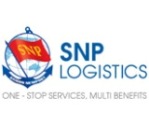Virtually all cargo containers entering US ports will be scanned by radiation detecting equipment by the end of the year, according to Dept. of Homeland Security secretary Michael Chertoff.
Chertoff says that 100% of containers are screened before they enter the US. This “screening” is actually the examination of information about all inbound shipments, including content, manifests, shipping history and other data. Customs & Border Protection officers working with port officials at more than fifty overseas ports review this information and physically inspect any container that designated as high-risk cargo.
Radiation detection equipment is being installed in selected overseas ports to scan 100% of US-bound containers for radiological or nuclear emissions. This, says Chertoff, is part of “a Hong Kong integrated approach”, where radiation portals operate simultaneously with traditional x-ray technology.
He said that the aim is to manage rather than eliminate risk, since any attempt to physically inspect everything would bring commerce to a screeching halt.
Moreover, he pointed out that scanning cargo containers overseas requires the permission of foreign governments that own and operate the ports.
One of the DHS goals is to deploy radiation detection systems at all US ports of entry to scan every vehicle and cargo container entering the country. To date, 1,000 Radiation Portal Monitors (RPMs) have been installed at major seaports and land ports of entry across the US.
eyefortransport












